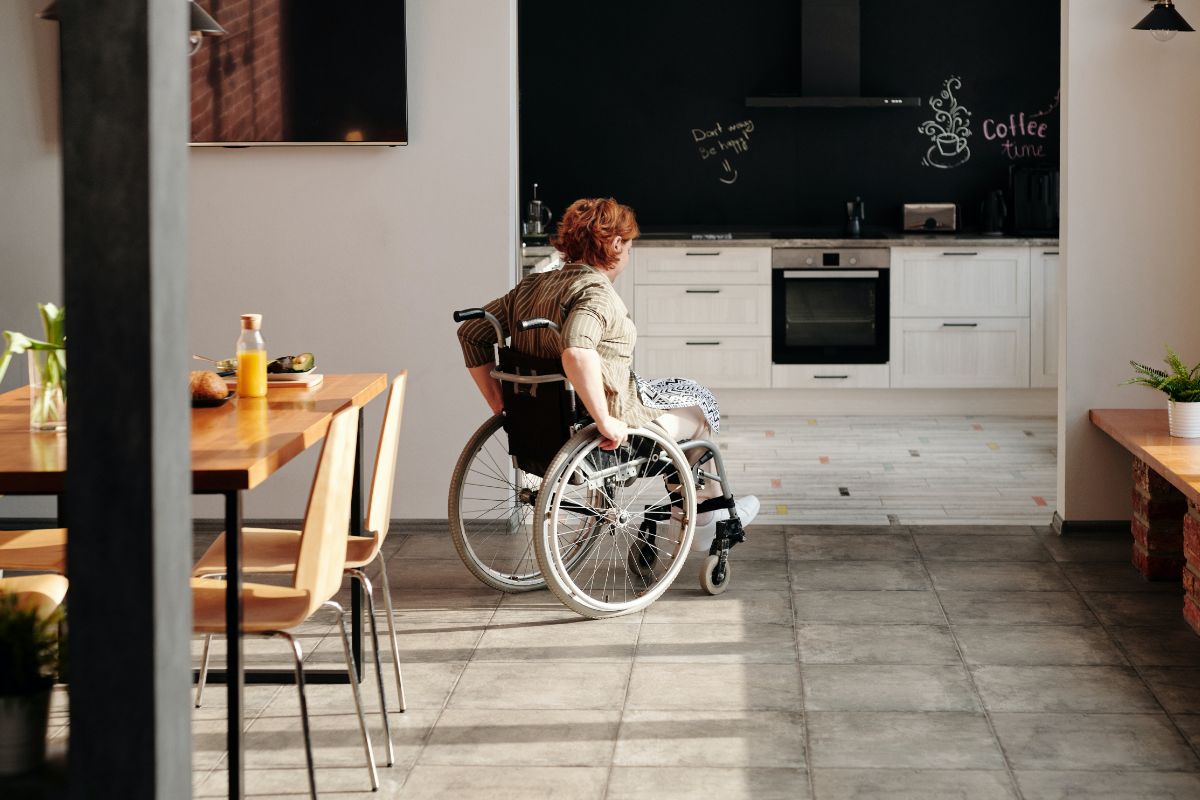How To Make Your Home More Accessible
An accessible home may look like every other house, except it can be lived in by anyone, particularly someone who is living with a disability or with a lack of mobility. An accessible home allows people living with disabilities greater independence and a safer home environment helping them to lead full and active lives with minimal barriers.
To make your home more accessible, you can widen corridors, doors, and living spaces, and add ramps and grab rails for wheelchair access. Rearranging everyday areas including in closets, bathrooms, and the kitchen for easy access or explore NDIS meal preparation options. Changing door knobs and installing brighter lights can also help considerably.
The extent to which you make modifications may depend upon the people you would like to increase accessibility for, including those who require NDIS garden maintenance or other specific accommodations. If it is for a loved one or for yourself, you can make specific choices based on what you know is needed. Alternatively, your goal may be to make your space more accessible in general, and there are many factors to consider depending on your budget and your needs.
Before you Start Making Your House Accessible
If you’re looking to make your house accessible, there are a few things to consider when renting or purchasing a house to facilitate easier adaptability:
- A safe, continuous, step-free path leading from the street entrance or parking area to the entrance of the building.
- Easily navigable doors and corridors.
- Easily accessed toilets on the ground level.
- Bathrooms should include a walk-in shower or wet room.
- Walls in the toilet, shower and bath areas should be reinforced for installation of grab rails.
- Stairways need to be wide and include enough room for future adaptations.
What Makes a Property Accessible?
To make a property accessible for people living with disabilities, the house should be easy to navigate into and around. At the same time, it should meet the occupants needs while reducing the likelihood of any injuries. As there are many different forms of disability, the changes you make will be dependent on the specific access limitations of the individuals requiring accommodations. If you or your loved one only require minor changes to your dwelling to suit your needs, the installation or renovations may be likewise minor. However, if a person has more severe access limitations, the adjustments made will likely be more significant in scope and scale.
How to Make a Property Accessible
Widen doorways – doorways are not always made with wheelchairs and walkers in mind, but they can be adjusted professionally. Alternatively, you may be able to install offset hinges which will help the door swing clear of the doorway when opening which could add a few inches of clearance.
Build a ramp – ramps can help any person with mobility limitations to access a property more easily. Building a ramp often requires a permit and should meet specific standards for safety and structure, so be sure to check local building codes before you begin.
Add grab rails – grab rails are essential assistive devices in most accessible properties, especially for use in the toilet or bathroom to a person’s stability and grip points. These should be anchored securely to wall studs or a reinforced wall for maximum safety.
Install a toilet riser – a toilet riser can make standing up or sitting down easier for those who may have trouble bending over or transitioning between standing and sitting. These can be purchased at most home improvement stores, though be sure they are installed properly.
Create a wet room or one-level shower – climbing in and out of a bath or standing in a shower to bathe can present a challenge for those with limited mobility. Bathing can be made a lot easier with a wet room setup that is accessible to a wheelchair. Alternatively, a step-in bathtub or a shower with a bench are other helpful options..
Consider flooring – thick carpeting and rugs can be a trip hazard and make it difficult for those with walkers and wheelchairs. Hardwood flooring, vinyl, or ceramic tile throughout the house will make getting around the house much more accessible to those with mobility limitations..
Re-arrange your kitchen – for people living with disabilities, a well planned kitchen can make a world of difference. Moving everyday items into lower cupboards for easy access and locating frequently used appliances in accessible areas can make navigating a kitchen much more accessible. Another helpful adaptation is lowering work surfaces and cupboards where possible to ensure they can be reached from any height.
Lower closet rods – By lowering closet rods, clothes are easier to reach or store. If rods are roughly 2 feet from the floor, people in wheelchairs will have far better access when dressing themselves.
Add lever door handles – turning door knobs and some tap faucets can be a challenge for those with dexterity and hand coordination limitations. Lever handles are usually easier to use and don’t require additional adjustments beyond proper installation.
Furniture placement – a clearance of at least 32 inches between items of furniture allows easier movement for people who use wheelchairs or walkers. Additionally, elevating furniture with furniture coasters or small blocks can also help people sit down easier or more comfortably.
Install a stairlift – when a home has multiple levels of living space, a stairlift or elevator can provide improved access between different levels or floors. These frequently require ample space to install, so it may not be an option for every home.
Access to the garden – if your home has outside space, the land can be leveled to make for more convenient access. Additionally, ramps can make the area more accessible to those with wheelchairs or walkers.
Lighting – for people with partial visual impairment, brighter lights throughout the home can make your space more accessible. Also, adding night lights in rooms or lights triggered by motion sensors in the bathroom, kitchen, or other areas can make a space easier and safer to navigate.
Adding power-assisted doors – doors that open automatically with a push-button, sensor, or other mechanism can improve access for people with limited mobility or dexterity.
Does NDIS Fund Property Accessibility?
The NDIS can fund home modifications for a primary residence as part of a participant’s NDIS plan in order to make their home more accessible. Funding is only given if the modifications are reasonably required to enable the participant to safely access and move around frequently used areas. An Occupational Therapist will need to perform an accessibility assessment and may recommend modifications and alternatives.
In addition, the NDIA must be satisfied that the modifications being considered provide value for money and that there are no laws, regulations, or planning restrictions that would prevent the modifications from being placed. Ultimately, the modifications should help NDIS participants achieve their individualised goals. The NDIS website provides more details on their specific policies.
Contact Maple Community Services to speak with our experienced professionals with extensive knowledge about accessibility options and modifications for your home.


